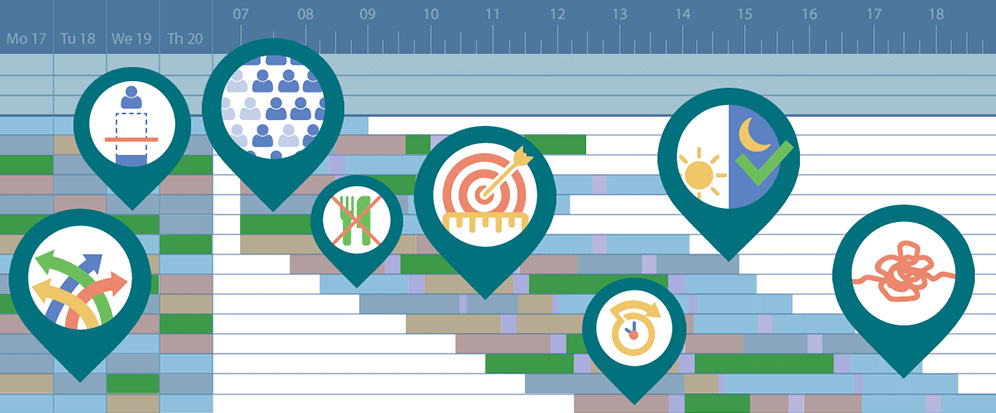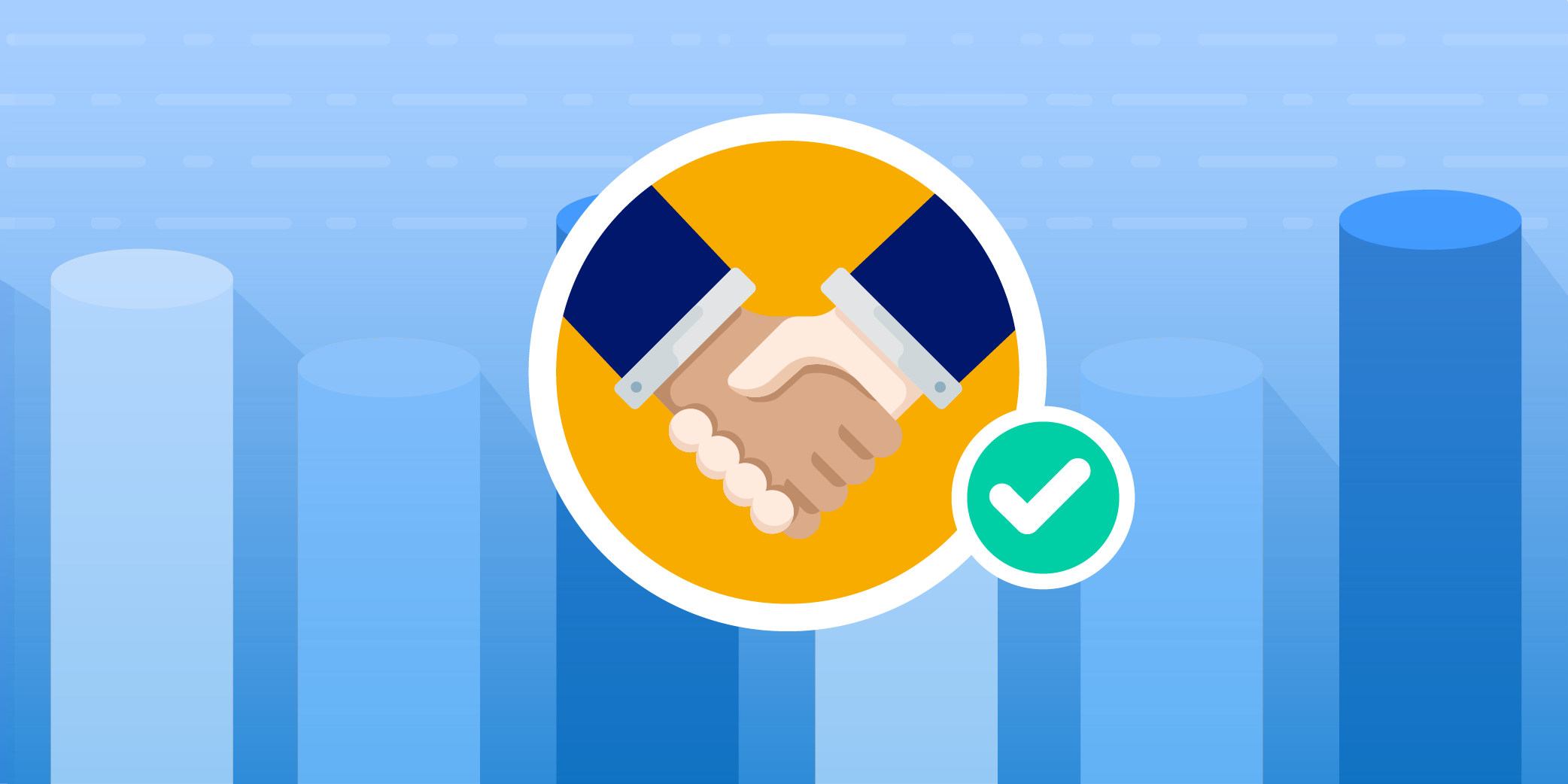Since late 2022, AI (artificial intelligence) has been all over the news. Every technology vendor has jumped on the AI bandwagon and there is a lot of hype out there about the transformational impact of AI. The implications of AI affect every industry, and the AI story isn’t going to end anytime soon.
On the other hand, the number 1 operational priority for almost all organizations is retaining talent. It’s more important than revenue, according to a study by Gallagher. What is needed is a people-centric approach.
But how can these two trends co-exist? Aren’t people-centricity and artificial intelligence mutually exclusive? We believe not. Read on to find out why.
Understanding people-centricity as the driving force for sustainable success
First, let’s take a look at the current employment landscape, where the battle to attract and retain top talent is intensifying. Companies are grappling with several key challenges, including a shift in employee expectations and significant demographic changes. These factors underscore the growing importance of adopting a people-centric approach to drive employee loyalty and ensure organizational success.
What is people-centricity?
People-centricity comes in various forms, with each organization having a different interpretation. For us at Peopleware, it entails the following: Our people are at the core of everything we do. This includes considering their well-being, fostering their growth, and valuing their perspectives in all our business strategies and decisions.
Why people-centricity matters in the current and future labor market
There are two major trends in the labor market right now. On the one hand, we are experiencing an aging workforce in many developed countries. More people are retiring than are entering the workforce. This demographic shift is resulting in a shortage of experienced workers across various industries. And the outlook doesn’t look good.
On the other hand, the younger generation has higher expectations for their work than just paying their bills. While humans have always wanted their work to be meaningful (after all, work usually plays a huge part in our lives!), this desire is a defining characteristic of younger generations like Millennials and Gen Zs. According to Forbes, millennials and Gen Zs now form the majority of the workforce. They now have the bargaining power to demand that employers align with their values. There's a growing expectation of better work-life balance, with more employees seeking better working arrangements, such as remote work options, flexible hours, and a greater focus on mental health and well-being.
In short, the available workforce is shrinking, and the workforce that remains is becoming more demanding. That puts companies in a tough position and makes employee retention one of the top priorities.
This is where people-centricity comes into play. We believe that our approach can keep up with the evolving expectations of younger generations. Automation and AI increasingly take care of the mundane, repetitive aspects of work, freeing up human workers to do the creative work that only humans can do. Creative work requires intrinsic motivation, which doesn’t play well with traditional carrot-and-stick motivators.
Understanding AI in the Modern Workforce
Throughout history, work has constantly evolved. But new AI tools, led by OpenAI’s ChatGPT and Google’s Gemini, have dramatically accelerated the pace of change. For the modern workforce, this development has various implications. Let’s take a look at a few of these.
What difference do the new AI tools make?
Since OpenAI released their Large Language Model (LLM) -based AI engine ChatGPT, it feels almost like the gold rush at the Klondike River in 1896. Everybody wants a piece. And even though it is tempting to ignore the buzz around AI in the same way that many people wisely ignored the hype around NFTs (non-fungible tokens) a few years ago, we think that would be a huge mistake. AI is here to stay. By the way, AI has already been here for some time, even though you could be forgiven for not noticing it. But whenever you open any social media platform with a personalized feed, you are experiencing a machine learning algorithm at work.
But the current breed of AI is quite different. Generative AIs like ChatGPT, Midjourney and Stable Diffusion opened up a completely new way to use AI. Not only in what AI can do - generate original content in text or image form -, but also in the way it is used. For the first time ever, anybody who can type can operate AI models.
This makes these tools accessible to everybody. No matter whether you are a developer, marketeer, a customer service representative or a workforce planner.
What does that mean for the modern workforce?
The implications for the current workforce are tremendous. Never before was a tool at hand that could cope with such a variety of tasks.
Let’s take a look at the opportunities and threats:
Opportunities
- Productivity improvements - tasks that might have taken hours before can now be completed in a few minutes. Whether the task is writing an email, creating an image, or researching information.
- Delegation of routine tasks - mundane tasks such as data entry, number-crunching, or basic customer inquiries through chatbots can be automated.
- Employee empowerment - automation frees up employees to focus on higher-value activities that require human judgment and creativity. This work is usually more rewarding.
Threats
- ‘Hallucination’ of ChatGPT - Large language models like ChatGPT have the potential to generate misleading or false information. It's essential to verify the accuracy of generated content and implement measures to prevent the dissemination of fake information.
- Regulatory compliance - AI systems rely on vast amounts of data to function effectively. This data may include personal information. It follows that regulatory concerns related to data protection, consumer privacy, fairness, and transparency may arise. Businesses need to ensure compliance with relevant regulations such as GDPR, CCPA, or industry-specific standards when deploying generative AI.
- Ethical considerations - LLMs raise various ethical considerations, including the responsible use of AI, accountability for model outputs, and the potential societal impact of AI-driven decisions. Businesses must prioritize ethical considerations throughout the development, deployment, and use of LLMs to avoid unintended consequences and negative societal impacts.
While it is true that anybody who can type can now operate AI, in reality, it’s not that simple. As with all technological progress, AI demands a shift in workforce skills and attitudes. People need to be open to change, willing to expand their skillset, and understand AI as a tool to improve their own capabilities rather than an existential threat to all human work. It also requires the development of hard skills: The ability to define the intention and clearly communicate this in the format that the tool understands. In the end, it does not do the job independently, it does the job according to your guidance.
But it's not just people who need to change. Organizations that require this level of adaptability and skill from their workforce need to create environments that maximize learning possibilities and creativity. And that is what differentiates truly people-centric organizations from those still anchored in traditional, hierarchical structures. At Peopleware, a general rule of thumb is that with each organizational change, we try to optimize the sense of Autonomy, Mastery and Purpose for our people. We have found that this is what makes people feel intrinsically motivated, and what makes their work meaningful and enjoyable.
How did Peopleware react to the latest developments in AI?
At Peopleware, the latest AI innovations did not come as a surprise. We have been using AI within our business for quite some time now, and we even deployed AI within our product several years ago. Still, the first time we saw what ChatGPT could do, we were very impressed. And we were excited when we realized the huge potential it has for improving our work.
“Whenever there was technological progress, which allowed some jobs to be automated, they have been automated. [...] AI is just another aspect of exactly that trend.”
Technological progress, and its little sister automation, have been going on for centuries. Whenever there was technological progress that allowed some jobs to be automated, the jobs were automated. AI is just the latest instance of that trend. The biggest difference generative AI makes is the speed with which automation will occur. It does not change the game overall, it is just an accelerator.
Not a contradiction, just a continuation
Okay, AI and automation are inevitable. But how does that fit into a people-centric approach? If AI takes over jobs from humans, should a people-centric organization even use AI?
We asked our CEO, Peter Bollenbeck, for his take on this. He has a clear view on the topic: AI represents a technological leap, but it is a tool, just like the tools that people have used in the past. And since the dawn of mankind, people have always used tools. Just because the tools now include AI does not take anything away from being human. Humans still are humans. For him, this development of AI is not a contradiction but a continuation of an ongoing trend.
“It is not a contradiction, it is just a continuation of what we have done before.”
When looking at how the job landscape will change, it is clear that jobs that are capable of being automated will change. It might mean that some jobs will not be needed anymore because an AI can do the task much more efficiently. But for other jobs, AI represents an opportunity for humans to add value to the job. In other words, the more we humans delegate work to our robotic friends, the more we can will shift our focus to challenging, non-routine, conceptual tasks. That’s good news, actually: goodbye, boredom and tedium. Hello, creativity and more rewarding work.
“These jobs which are up for automation will change. Some work will fall away, but new work will appear. This is not a zero-sum game.”
We strongly believe that this is not a zero-sum game. In the end, people will benefit from using AI as tools.
Watch the full video:
How AI empowers our people
During our interview with our CEO, we wanted to know what his response is likely to be when we tell him that we want to use AI tools. His answer was characteristically clear: “Whatever can be automated, will be automated. So go ahead, use them.” That applies even to using ChatGPT to create further questions for him!
So let’s talk about how we actually use AI in our organization.
Case study: Using ChatGPT for writing content
This case study comes directly from our marketing team. As a content-heavy department, we need to create content on a continuous basis. LLMs like ChatGPT are a huge help in creating content such as blog posts, as long as you are aware of their limitations.
These are the ways in which we use ChatGPT in the blog post creation process:
- Research about the topic
We use ChatGPT as an additional source when researching a topic. We are aware that we might get some fake information, but since we are using multiple, we always check ChatGPT’s output for accuracy and correctness. - Checking search intent of targeted keywords
From version 4.0, ChatGPT has access to the internet. This enables it to help with tasks that previously were very manual. It has been a boon when checking search intent for targeted keywords. - Creating a blog post outline
LLMs are trained on large data sets. The more often a piece of information appears in the dataset, the more probable is it that the model will recreate this information. That might sound like a disadvantage for creative processes, but in reality, it is quite helpful when creating a blog post outline. The ChatGPT outline will show the topics that most often appear in the training data. This is a reasonable representation of what search engines will expect. Of course, we always cross-check with actual top search results. - Writing the blog post
Yes, we are also using ChatGPT in the writing process. But we do not let ChatGPT write the whole blog post. Instead, we use it to get inspiration for different aspects of the topic we want to write about.
Case study: Using machine learning to improve WFM forecasting
We don’t just use AI to run our business more efficiently. We are also incorporating it into our products, for example, in the forecasting functionality of our WFM tool Peopleware.
This is what our Lead Data Scientist, Dr. Susanne Hoffmeister says about the use of AI within our product:
“Peopleware's method combines state-of-the-art AI forecasting technology with in-house expertise. Our AI-driven forecasting model constantly evolves, improving accuracy with each new data input, and turning complex data into reliable and actionable forecasts for our customers. And it does that with a fraction of the user effort required by traditional forecasting methods.”
We could ramble on for hours and hours about how our forecasting works, but we already created a nice infographic that explains it concisely.
Conclusion
AI and people-centricity are not contradictory. AI is just another tool that automates mundane jobs. Generative AI is a huge leap forward, but it does not change the underlying fact: AI is a tool. And people have been using tools forever.
We are aware that AI might make some jobs obsolete. But we are also very sure that this is a good thing. That’s because the work that is not automated away will become more meaningful. And in the end, every technological progress has created more jobs than it took away.
AI in a people-centric organization means using AI to empower our people to do an even better job. We want our employees to spend more of their time on conceptual, creative work and less of their time on routine jobs. That’s why we encourage our people to use AI as a tool, while not forgetting to apply reason and critical thinking. We look forward to discovering new ways in which AI can help us to improve outcomes for our business, our people, and our customers.














